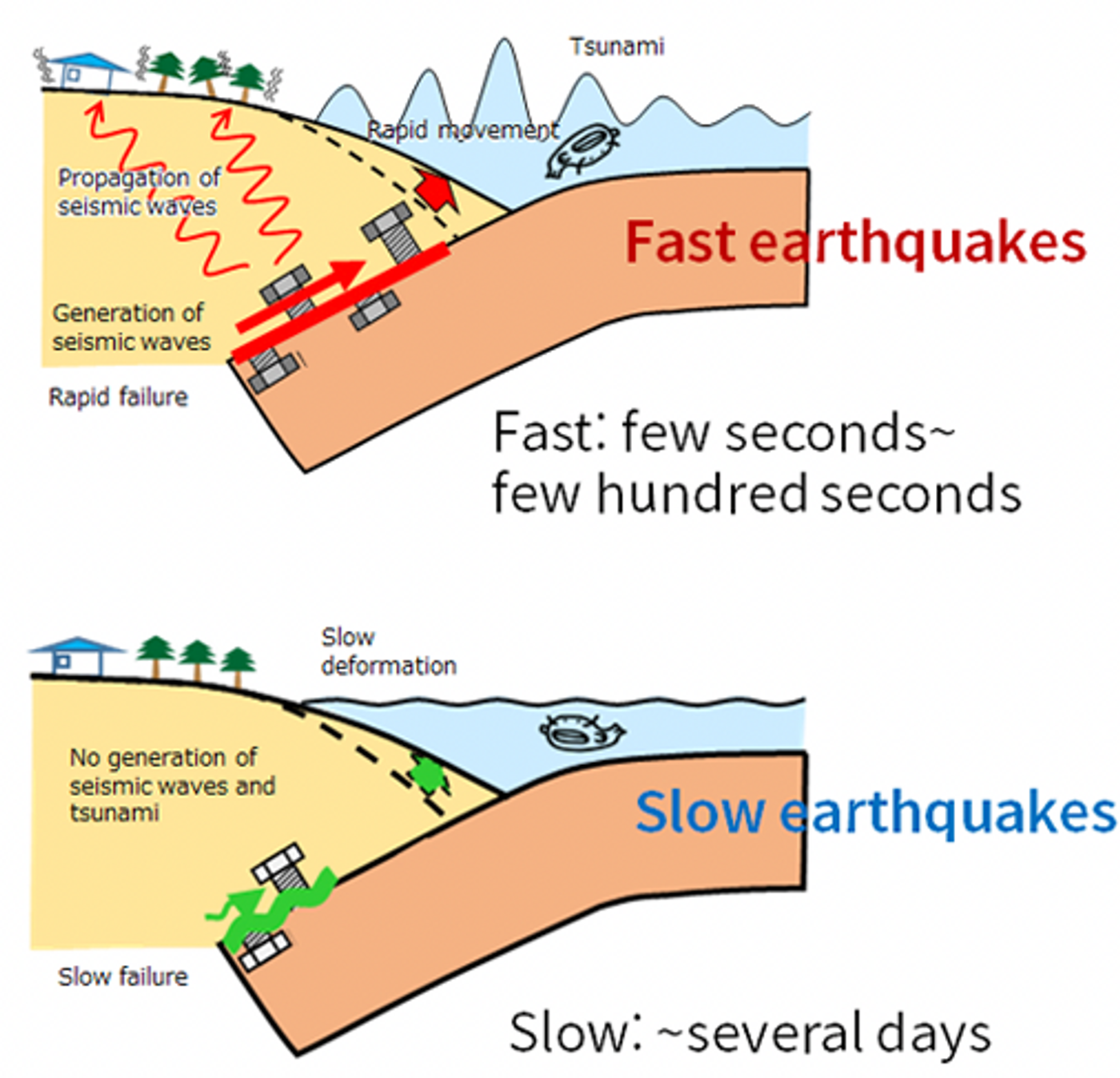Unraveling the Mystery of Slow Earthquakes: Understanding the Differences and Significance for Seismic Forecasting
A recent study published in the Proceedings of the National Academy of Sciences questions a longstanding hypothesis regarding the buildup of both fast and slow earthquakes while providing a potential framework for predicting them. This study builds upon what are known as earthquake scaling laws, which help seismologists determine a link between two amounts over large interims.
(Credit: Image modified from “Science of slow earthquakes” leaflet. https://www.eri.u-tokyo.ac.jp/project/sloweq/en/newsletters/pdf/leaflet_EN.pdf)
However, a new scaling law was introduced in 2007 that was developed to determine a link between earthquake magnitude (energy) and length time of earthquakes. This was received with harsh criticism, and this most recent study holds the potential to help re-write this contentious scaling law while providing scientists a better understanding of the tectonic processes behind earthquakes and how we can best prepare for the next one.
“Most of the challenges to the scaling law were problematic, but we have had no chance to disprove their challenges,” said Dr. Satoshi Ide, who is a professor and seismologist at the University of Tokyo, lead author of the new study, and whose team introduced the 2007 scaling law. “A surprise was that totally erratic results were published in Nature, and believed by many scientists, who made further problematic numerical models.”
In the 16 years since that scaling law was introduced, both the technology developed for earthquake detection and new data allow this most recent study to argue that contentions made against the 2007 law possessed illegitimate and conflicting data measurements given the lack of aforementioned detection technology available at the time.
The researchers recommend setting an upper bound, or speed limit, for slow earthquakes, arguing the difference between slow and fast earthquakes is demonstrated in both diffusion and wave propagation. This is because slow earthquakes demonstrate a greater level of diversity than fast earthquakes due to slow earthquakes possessing a variety of frequency bands, which are each named tectonic tremors, slow slip events, low-frequency earthquakes, and very low-frequency earthquakes. Therefore, seismologists analyzing one type of slow earthquake can rule out the others.
“Our study confirmed that all these phenomena are mutually connected, or rather regarded as a single phenomenon that radiates various signals,” said Dr. Ide.
With a combination of new data and models, the new study shows diffusion controls slow earthquakes while seismic wave behavior controls fast earthquakes. However, despite these findings, debate continues on how to predict slow earthquakes.
“We pointed out that ‘diffusion’ is important in slow earthquakes, but what is physically diffusing is not well understood,” said Dr. Ide.
Despite this, the new study’s finding could provide the framework for developing necessary quantitative models, predictions, and providing corrective actions.
What new discoveries will researchers make about slow earthquakes in the coming years and decades? Only time will tell, and this is why we science!
As always, keep doing science & keep looking up!
Sources: Proceedings of the National Academy of Sciences, EurekAlert!, National Oceanic and Atmospheric Administration, Nature, University of Tokyo, Wikipedia, Study.com









